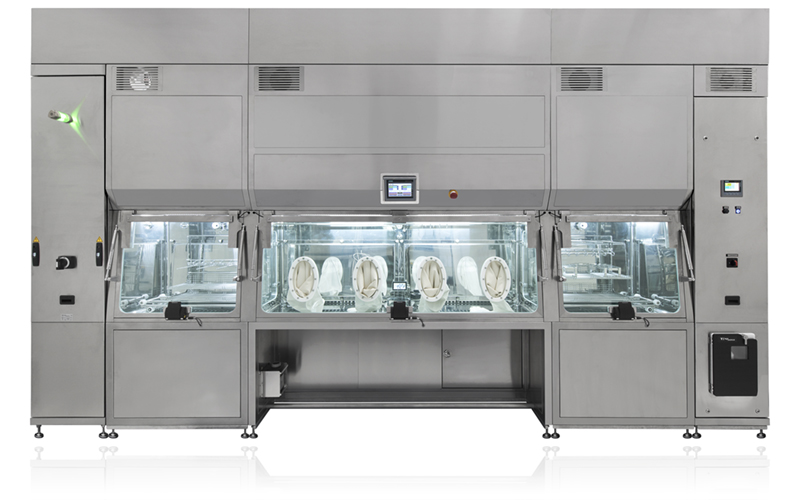Laminar flow hoods installed in a cleanroom and isolators are both suitable solutions for sterility test execution in the pharmaceutical sector, although one is remarkably more efficient in delivering the necessary aseptic conditions.
Sterility testing in the pharmaceutical sector is a quality control analysis, mainly performed on pharmaceuticals which are manufactured through an aseptic process and that can pinpoint possible non-sterile product batches.

The Pharmacopoeia allows the necessary aseptic conditions to perform the test to be obtained through two different technologies:
- Class A laminar flow hood installed in a Class B cleanroom.
- Isolator, whose installation in a classified environment is not mandatory.
However, these different technologies won’t guarantee the same results. The main limitations of the sterility test in the pharmaceutical sector lie in the chance for a potential background contamination to block out possible low contamination levels of the product. Hence it is paramount to perform a microbiological analysis in an environment which shows the lowest contamination level possible.
That’s why choosing the isolator is the safest option in order to reach the most reliable results.
Why choose the isolator for sterility testing?
Because using an isolation system (commonly known as isolator) will completely eliminate any potential background contamination. It is well known that the primary cause of contamination within a cleanroom is the personnel allowed inside the classified environment. A sterility test isolator will overcome this potential contamination source, by creating a physical and aerodynamic barrier between the installation and the test area, in which the aseptic processes take place.

Isolation system, is it cost effective too?
The current regulation does not require a sterility testing isolator to be installed in a classified background, although an installation in a Grade D laboratory should be considered good practice. Compared to the traditional Grade B classification, when a laminar flow hood (Grade A) is used, this installation environment downgrade allows a sensible cost reduction in maintenance of the laboratory and gowning for the operators entering the clean room.
Moreover, the cutback on false positives, which imply further investigations and delays in the production line batch release, adds up to a remarkable cost-effective result.
